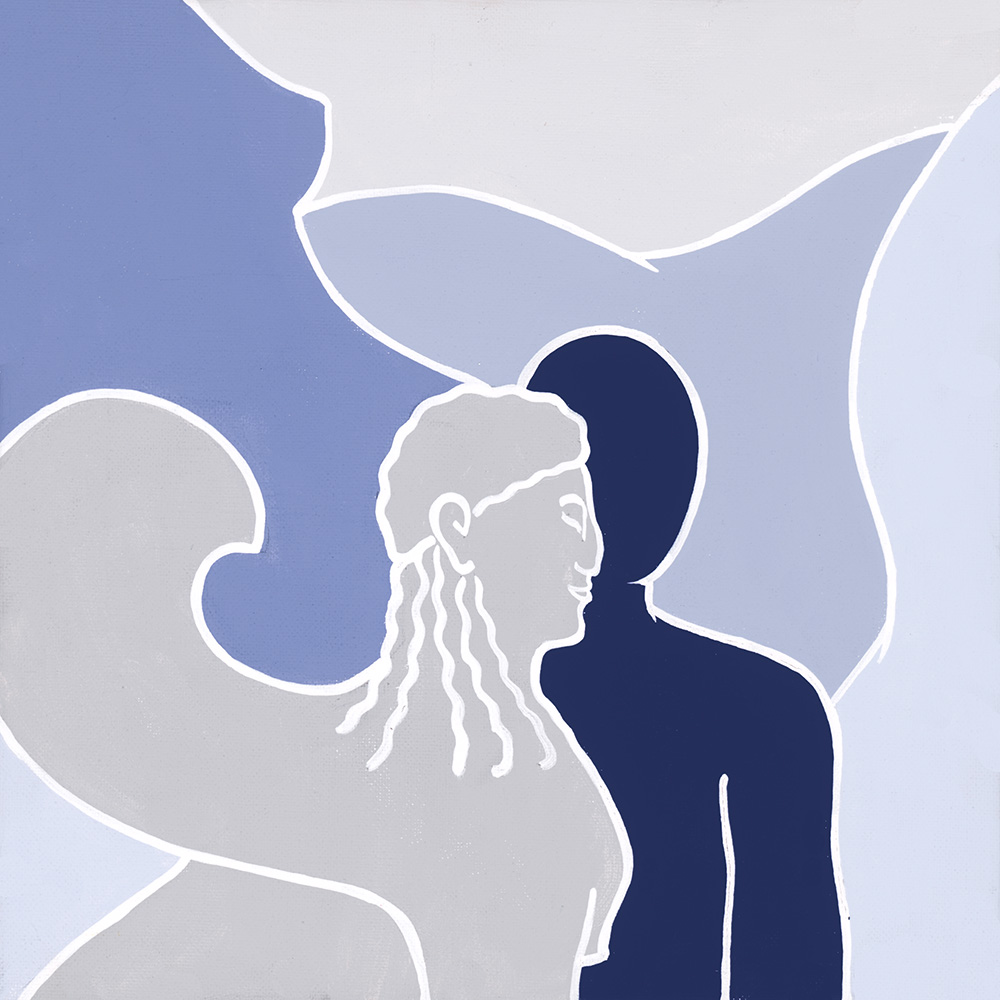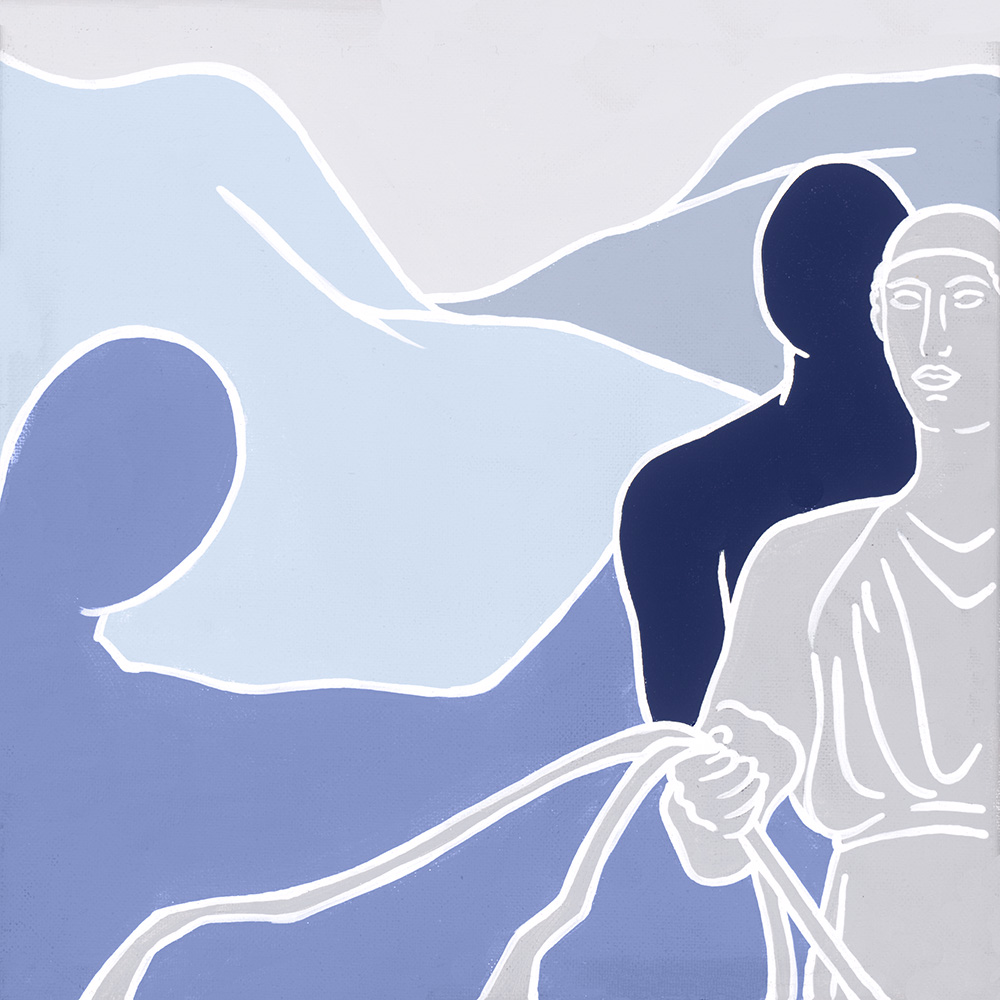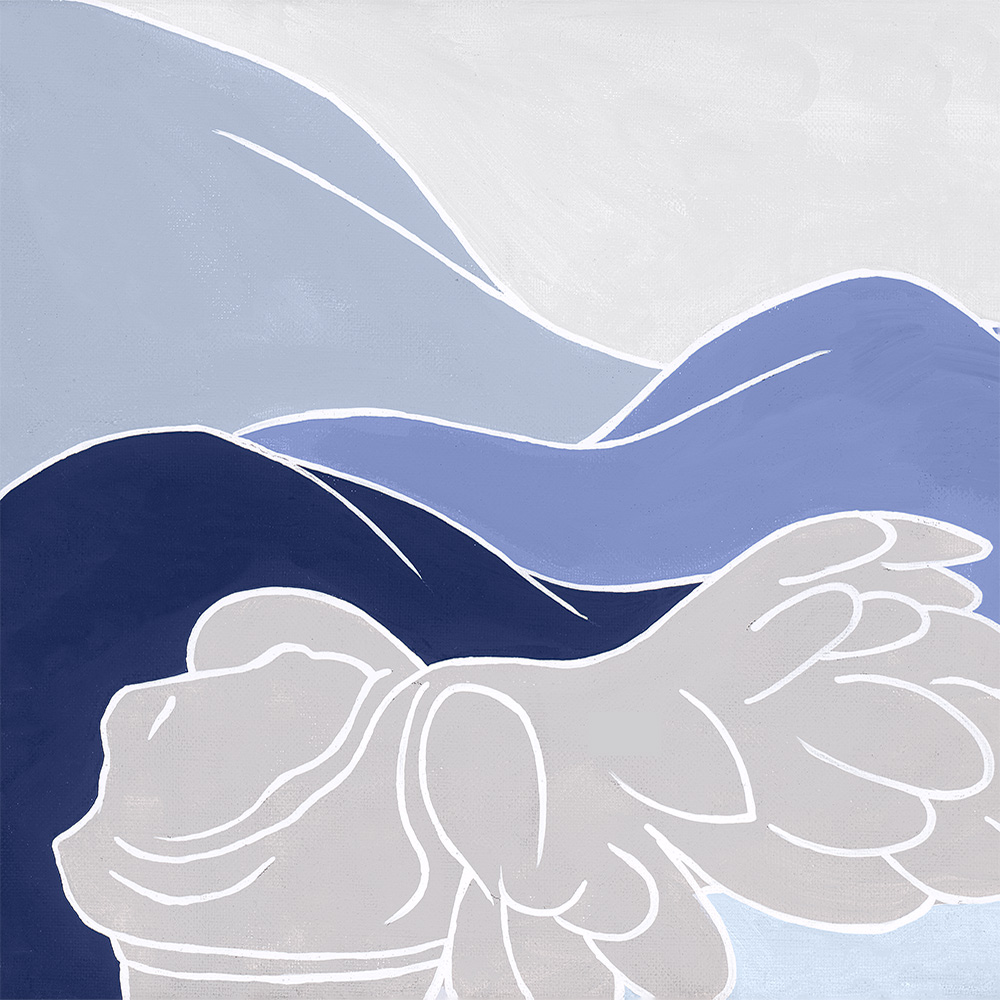Inspired by some of the most important Greek statues ever discovered through the years, Phos is here to connect the ancient sculpture with contemporary, minimalistic art, creating decorative objects & accessories of desire, as well as premium corporate gifts.
At Phos Collection, Ancient Statues’ figures become part of a hand painted canvas. All authentic artworks created by Greek painter Christina Michalopoulou.
Sphinx statue

It is the oldest dedicatory sculpture of a mythical creature at the Acropolis Museum, Athens. The wings were found in 1882-1883 east of the Parthenon and the head and body were retrieved in 1883 in the southwest corner of the old Acropolis Museum. It was made between 560 and 550 BC.
The Sphinx is seated on her hind legs staring straight ahead. Her large eyes are almond-shaped, her eyebrows arched and her lips form the characteristic smile of the period known as the “archaic smile”. Her wavy hair is gathered at the back with a band and spills freely over her back and shoulders. Her long wings are folded backwards and were initially decorated with painted details. During antiquity, this Sphinx would have been placed on a tall column.
Charioteer of Delphi

Also known as Heniokhos, the rein-holder, it is a unique example of ancient bronze sculpture. The life-size of this 1.8m statue of a chariot driver was found in 1896 at the Sanctuary of Apollo in Delphi. It was originally part of a larger group of statuary, including the chariot, at least four horses and possibly two grooms. Some fragments of the horses were found along with the statue. This widely acknowledged masterpiece of bronze art has been associated with the sculptors Pythagoras of Samos and Calamis.
It is now found in the Delphi Archaeological Museum.
Aphrodite of Knidos

It was commissioned as the cult statue for the Temple of Aphrodite at Knidos. It was created by Praxiteles of Athens around 4th century BC. It depicted the goddess Aphrodite as she prepared for the ritual bath that restored her purity, discarding her drapery with one hand, while modestly shielding herself with the other. The placement of her hands hides her pubic area, while simultaneously drawing attention to her exposed upper body.
The statue is famed for its beauty, and is designed to be appreciated from every angle. It is one of the first life-size representations of the nude female form in Greek history, displaying an alternative idea to male heroic nudity. The original Greek sculpture is no longer in existence; however, many Roman copies survive of this influential work of art. Variants are the Venus de' Medici and the Capitoline Venus.
Venus of Milos

One of the most famous works of ancient Greek sculpture (Hellenistic period, 150 - 125 BC), believed to depict Aphrodite, the Greek goddess of love, whose Roman counterpart was Venus. Some scholars theorise that the statue actually represents the sea-goddess Amphitrite, who was venerated on the island in which the statue was found. The work was originally attributed to the 4th century Athenian sculptor Praxiteles, but based upon an inscription on its plinth, it is now widely agreed that the statue was created later by Alexandros of Antioch.
Made of Parian marble, the statue is larger than life-size, standing 204 cm (6 ft 8 in) high. It has been displayed at the Louvre Museum since it was rediscovered on the island of Milos, Greece, in 1820.
Winged Victory of Samothrace

A masterpiece of Greek sculpture from the Hellenistic era, dating from the beginning of the 2nd century BCE. It is a votive monument originally found on the island of Samothrace, north of the Aegean Sea, and is composed of a statue representing the goddess Niké (Victory), whose head and arms are missing, and its base in the shape of a ship's bow.
The total height of the monument is 5.57 meters including the socle; the statue alone measures 2.75 meters. The sculpture is one of a small number of major Hellenistic statues surviving in the original, rather than Roman copies.
Winged Victory has been exhibited at the Louvre Museum in Paris since 1884.
